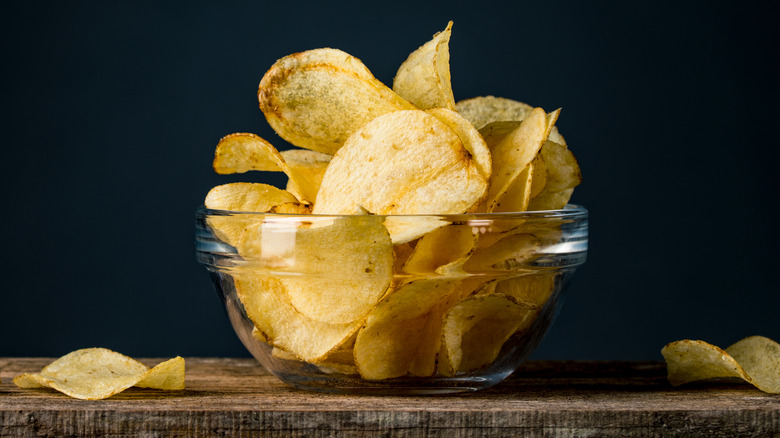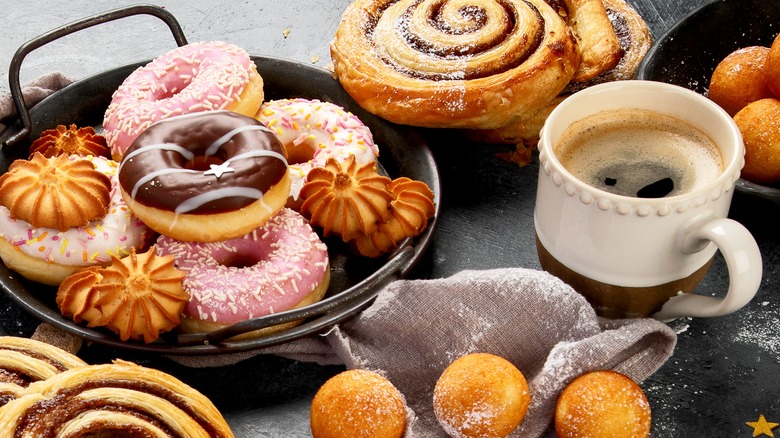New Study Finds 55% Of People Are Replacing Meals With Snacks
When you imagine snack foods, what appears in your mind's eye? Do you see potato chips and popcorn? What about protein bars and candies? Do any veggies make their way onto your list like carrots or cherry tomatoes? According to Harvard School of Public Health, a snack is technically any food you eat between breakfast, lunch, and dinner — something to sustain your energy and keep you from slacking off on the job because you're too hungry to concentrate. If the most popular snacks in America are any indication, a good snack can come in all shapes, sizes, and flavors.
And it doesn't look like we'll be slowing our snacking down any time soon. The snack market in the United States in particular has been steadily increasing over the last few years, rising from $116.6 billion in 2017 to $150.6 billion in 2022, and is projected to grow even more to $169.6 billion in 2027 (via CNN Business). So, why is snacking rising at an exponential rate?
A sign of the times
The latest State of Snacking report from Mondelez International highlights a trend that's gaining steam: snacks instead of full-on meals. On a global level, 71% of people snack at least twice every day, according to the snack food company. This already entails a considerable amount of snacks being consumed, but the study also shows that snacking is increasingly replacing meals across the three standard dining times. 55% of consumers stated that their households make a meal (breakfast, lunch, or dinner) from snacks at least weekly.
Research indicates that people tend to snack on a certain daily pattern, seeking options that satisfy their cravings and suit their preferences, and are less motivated by health-related factors as the day progresses. This means more nutritious items like yogurt and fruit are eaten in the morning, savory bites like chips are consumed during lunch, and sweets are enjoyed in the evenings (via Progressive Grocer).
It's likely that snacking will remain strong even in the face of potential economic woes. Despite inflation causing the price of nearly every food, including snacks, to rise, people are still willing to shell out money for their favorite items because consumers have a tendency to treat themselves to snacks when the economy goes down, per Quartz.

